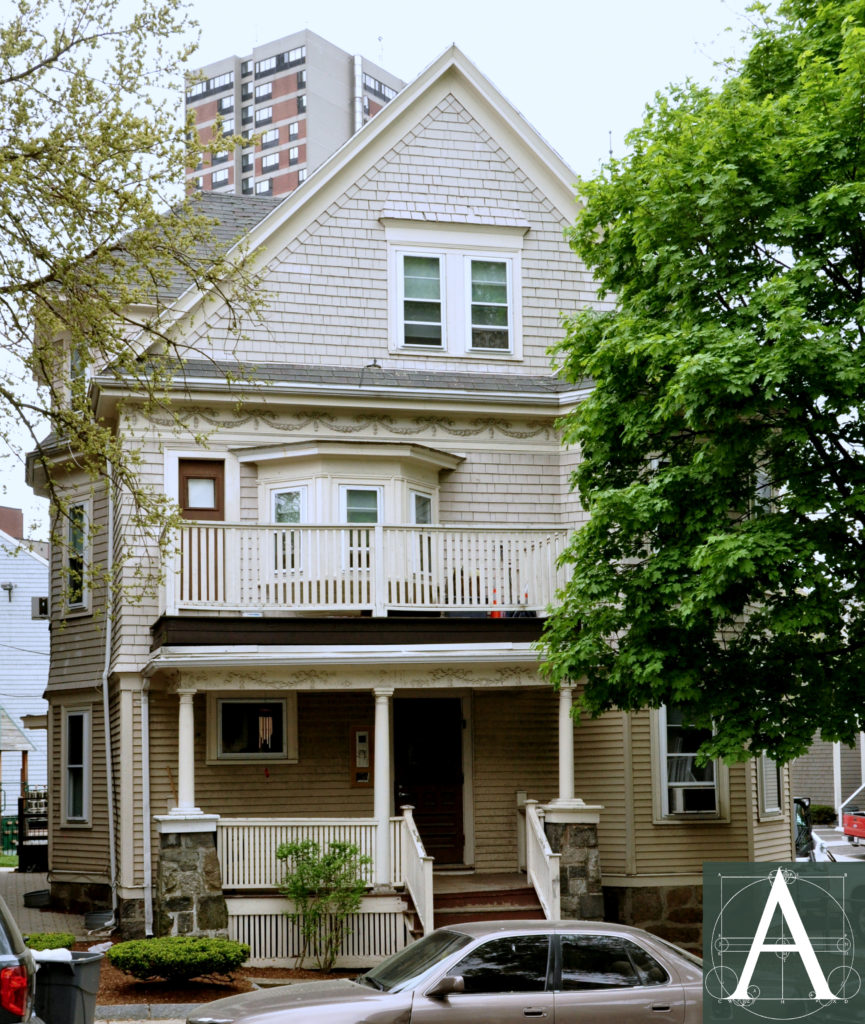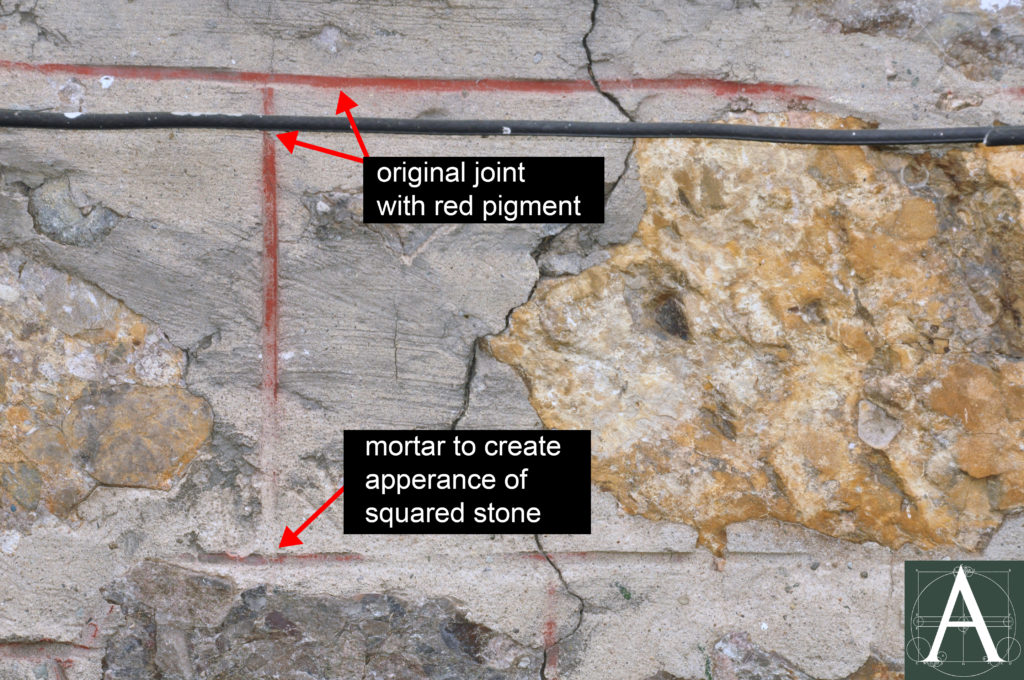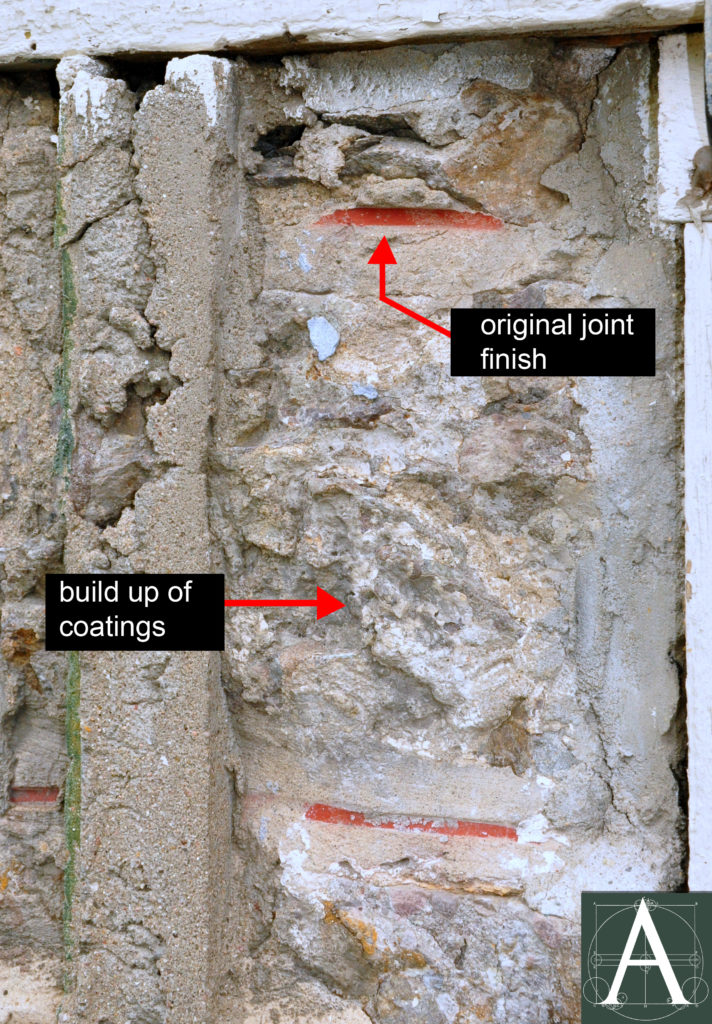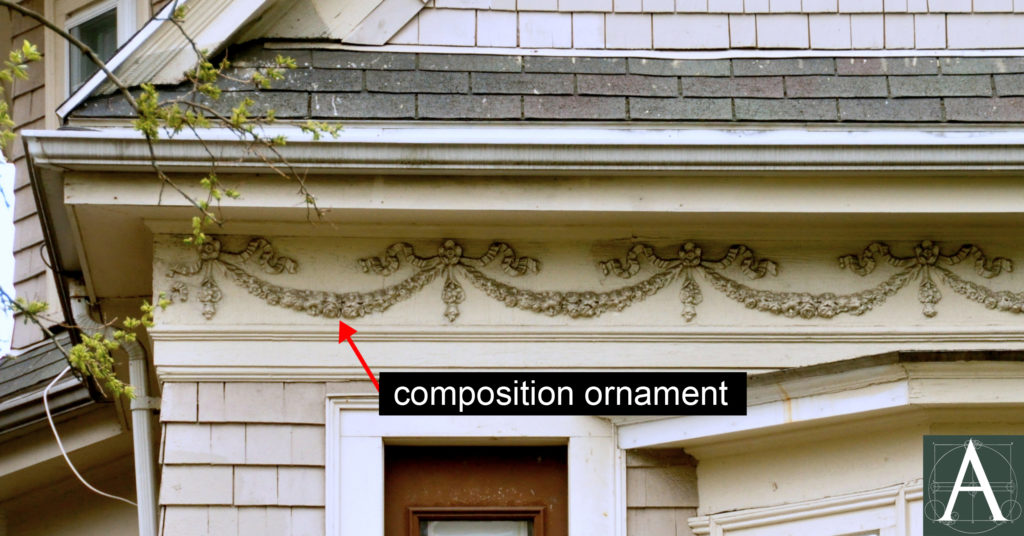Notable Elements
- Mortar applied over irregular stone faces, ruled and lined-out in red to give the appearance of random ashlar [Foundation]
- Composition ornaments consisting of festoons and rosettes; corner tower [Exterior]
History
The Ida Hosmer Two-Family House is one of many two- and three-family houses constructed on Fenwood Road and Francis Street at the foot of Boston’s Parker Hill at the turn of the nineteenth century by Jeremiah C. Spillane, a real estate developer. Spillane acquired a large parcel of land in this area in 1897 and quickly laid out streets and building lots, thereafter constructing more than twenty multifamily houses in addition to several masonry apartment houses within a span of eight years. The majority of buildings constructed in the area were substantial wood-frame, two- and three-family houses. Building permits usually list Spillane as the architect and builder of these residences, but no evidence of Spillane’s architectural training or experience has been uncovered. Other permits for buildings constructed by Spillane list individual architects; however, the similarity of the buildings’ plans and decoration suggests that architects were engaged primarily to produce drawings necessary for obtaining building permits more quickly than could be done by a single office, and to individualize some of the building details, perhaps to the specifications of initial buyers.
The initial owner of the house is identified as Ida A. Hosmer on the 1906 Atlas of the City of Boston. In 1905, the Boston directory records William F. Hosmer as living at this address; he was employed at F.H. Hosmer & Co. at Faneuil Hall marketplace. In 1910, the building was occupied entirely by renters: Mary E. Gillis, a widow (age 49), was a dressmaker who worked out of the house and lived here with her three children, Elizabeth (age 26), a stenographer in the wholesale fur business, Anna L. (age 21), a public school teacher, and Joseph H. (age 9), and her unmarried sister, Annie M. Farrie (age 58), who had no recorded occupation. Mary Gillis was born in New Hampshire to Irish immigrants. The other apartment was occupied by Gustave M. Menn (age 60), a confectioner at a hotel, who was born in Louisiana to parents of Swiss and German origin. Menn lived here with his wife, Catherine (age 52), American-born to German parents, and their children, Laura (age 22), a dressmaker, Elizabeth (age 19), a public school teacher, and Paula (age 16). By 1919, the property was owned by Mrs. James Mead of Swampscott, who adjoined the neighboring house at 40 Fenwood Road.
No architect has been identified for the Hosmer Two-Family House, although it possesses a plan that is essentially the same as those of two-family houses at 40, 55 & 57 Fenwood Road, with which it also shares a number of ornamental details. Typically, two-family houses in the area contained a six-room apartment on the first floor and a ten-room apartment on the upper two floors. Apartments in both two- and three-family houses usually contained a parlor or double parlor, dining room, kitchen, pantry and between three and five bedrooms each. Initially purchased by upwardly mobile working-class and middle-class families with a high proportion of immigrants and first-generation Americans, two-family houses, such as the Hosmer House, cost between $5,000 and $6,000. Apartments in the Hosmer House and neighboring buildings were mostly owner-occupied by an extended single family or a family with two or three lodgers.
Jeremiah Spillane was active in the real estate business from 1899 to 1913, and was directly responsible for the construction of twenty of the houses in this area, including 11, 15, 19, 32, 35, 36, 40, 43, 44, 49, 54 & 56 Fenwood Road, and 12, 16, 22, 32, 34, 36, 38, 44, 50 & 52 Francis Street. At least eight professional architects are recorded as working in the Francis Street and Fenwood Road District. Most were local firms well-known for producing high-quality, one- and two-family houses and three-deckers in Roxbury, Jamaica Plain and Brookline. The most prolific of the designers in the district was Samuel Rantin and Son of Roxbury, who designed 30 and 73 Fenwood Road, 40 Francis Street, 733 Huntington Ave (the Harmon Commercial Block) and 24 St. Albans Street. Frederick W. Mahoney of Roxbury designed three buildings, at 32, 36 & 44 Francis Street. Architects P. J. Cantwells, Timothy Desmond, Cornelius Russell, J. Schwartz (the Avondale apartments at 777-779 Huntington Ave.) and R. H. Watson are also represented in the district. The Boston Landmarks Commission Inventory Form for 170 St. Alphonsus Street notes that “Samuel Rantin and Son… were responsible for designing during the 1890’s through the 1910’s, many triple-decker houses of unusually high quality—in the Parker Hill, Highland Park, and Hyde Square (Jamaica Plain) areas.” A collection of architectural drawings by Rantin and Son is contained in the archives of Historic New England.
By the 1960s, Francis Street and the adjacent streets developed by Spillane had suffered deterioration and abandonment due to the migration of former residents to Boston’s suburbs. Much of the area was acquired by Harvard University. Most buildings in the area were subsequently transferred to the Roxbury Tenants of Harvard, a tenants’ cooperative that renovated the buildings by subdividing most apartments into smaller units. Original interior finishes were nearly entirely removed in the 1980s; however, notable exterior features remain in a rich variety of composition ornament and an unusually well preserved variety of mortar joints, including lined-out, tinted, and beaded mortar joints preserved on foundations throughout the district. Once common, these methods of finishing mortar joints have been forgotten as evidence of them has weathered away. [See: Foundation below]
Date
1900
Builder/Architect
Jeremiah Spillane, developer – no architect or builder identified
Building Type
Two-family house
Foundation
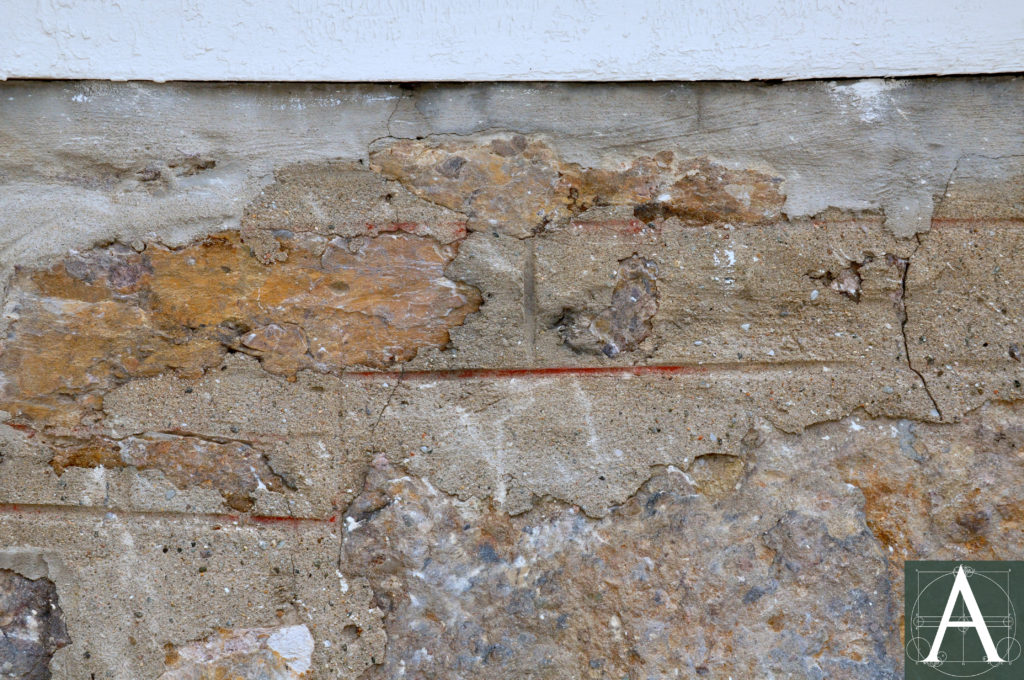
additional detail of masonry joints lined out in red to give the appearance of coursed random ashlar
As with the majority of buildings constructed in the Francis Street-Fenwood Road area, the foundation of the Hosmer House is constructed of Roxbury Puddingstone that was quarried on or near the building’s site. The stonework is laid in random rubble with wide, irregular mortar joints to provide a continuous surface. In some areas, mortar was extended over large stone faces to enhance the appearance of regularity. Mortar joints were ruled out across broad areas of mortar and even across mortar applied atop stone surfaces to give the appearance of coursed random ashlar. The concave joints were lined out with a dark red pigment in strong contrast to surrounding buff-colored masonry. Lined-out mortar joints have long been used to provide the appearance of more regular masonry finishes. The majority of such finishes have weathered away and not been replaced in-kind; however, examples survive in sheltered locations on buildings throughout the Francis Street-Fenwood Road area, most notably at 32, 36 & 44 Fenwood Road and at 22 & 52 Francis Street. Providing further evidence of the intentional quality of these finishes, sections of foundation that were originally concealed by the front and rear porches are constructed in random rubble with untooled bedding mortar at their joints, as they were never intended to be exposed to view.
Frame
Building permits report that buildings in this area were constructed with mortise-and-tenon wood construction (braced frame). Building frames were not available for examination during the most recent building assessment (2014); however, braced frame construction remained in use for architect-designed buildings at least as late as 1887 and probably into the early twentieth century.
Exterior
At the first storey, all elevations are clad with aluminum siding that probably conceals clapboards, above which elevations are clad with wooden shingles, a pattern of siding characteristic of the period. Notable period elements include the façade’s corner bay that rises as a tower to a steeply pitched turret and an ornate cornice decorated with composition ornament festoons, typical of those found on architecturally ambitious two- and three-families of the period. Ornaments such as these are found throughout the Francis Street-Fenwood Road area. It is not known whether these elements were selected entirely by the developer/architect or if potential buyers were offered options from which to choose, as many of the same details appear in different contexts on buildings throughout the area.
Contributor
Brian Pfeiffer, architectural historian; Wendy Frontiero, historical research
Sources
Unpublished conditions assessment conducted by Wendy Frontiero & Brian Pfeiffer, 2014.
“Francis Street – Fenwood Road District,” unpublished nomination to the National Register of Historic Places. Wendy Frontiero, 2015. Filed at the Massachusetts Historical Commission.
Boston City Directories: 1875 – 1931.
Boston Daily Globe. “Real Estate,” Dec. 16, 1897; “Schoolhouse Lots,” Jan. 8, 1902; “Spillane on Trial,” Sept. 20, 1907; “Declares His Innocence,” Sept. 21, 1907.
Bromley, G.W. Atlas of the City of Boston. 1884, 1890, 1899, 1906, 1915, 1931.
City of Boston, Boston Landmarks Commission (Rosalind Pollan and Edward Gordon). 1984 Survey and Planning Grant; Part I – Parker Hill/Mission Hill Project Completion Report, 1985.

